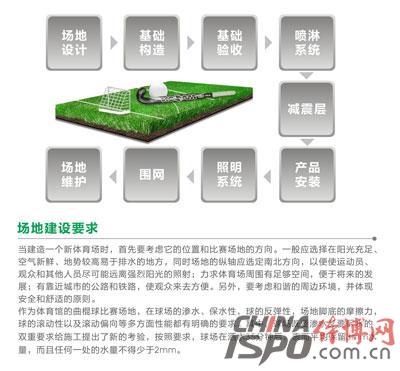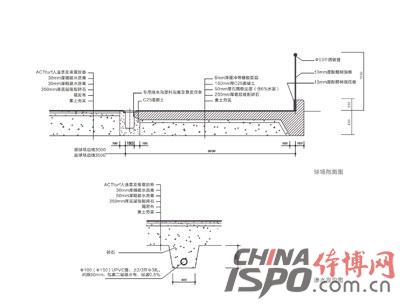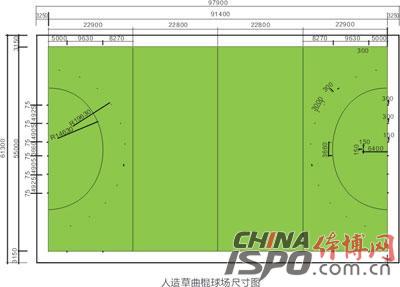Introduction:
November 24, 2010, Guangzhou Olympic Sports Center hockey field with the number 6 Sun Si Nan penalty penalties penalties, Chinese women's songs successfully defended. In an instant, the Chinese team's coaching staff all ran over and the women's music girls embraced each other. They surrounded a five-star red flag in the middle and the stadium was reflected in a brilliant Chinese red.
At the press conference after the game, women's song coach Jin Rubo could not conceal his excitement. He exclaimed, “We are a silver medal in 2008. At the London Olympics, of course, I hope to be a gold medal. Can it not be realized? The key is We must have such a goal and strive to achieve this goal."
Indeed, the Koreans’ strong aspirations are well-founded. With the 2008 Beijing Olympics runner-up and the 10-year championship of the Guangzhou Asian Games, the Chinese women's hockey teams have proven their strength over the years and have also verified this. The Development and Future Trend of China Hockey.
In recent years, China has paid more and more attention to hockey, the oldest and most glorious project of the Olympic Games. In addition to vigorously strengthening the national team's training standards and winning the gold goal, it is through the preparation for the construction of hockey sticks in various places to promote the enthusiasm of the entire people to participate in this sport.
Hockey, also known as grass hockey, is one of the oldest and most glorious projects in history. The name hockey originated in French, meaning the shepherd's cane. As one of the oldest sports in the world, hockey appears 1200 years or more earlier than the original Olympic Games.
As we all know, modern hockey games are conducted using artificial turf. The special turf for this project is far from the soccer artificial turf we often talk about. At the same time, there are many requirements for its product standards, paving and post-maintenance maintenance, and it is difficult. There are also only a handful of enterprises in China's stadium construction industry that can really undertake the production and paving of hockey artificial turf.
As the hockey game has become increasingly fierce in China, it is imperative to promote formal and authoritative standards for the paving of this sports venue and production techniques.
What is Hockey
Hockey, also known as grass hockey, is one of the oldest and most glorious projects in the Olympic Games. The name hockey originated in French, meaning the shepherd's cane. As one of the oldest sports in the world, hockey appears 1200 years or more earlier than the original Olympic Games.
origin
The modern hockey movement originated in the United Kingdom in the early 19th century and became the first official competition in the London Olympics in 1908. It became a fixed event in 1928 and a women's event in 1980. In the 30 years since the 1920s, India almost monopolized all world championships and won gold medals for 6 Olympic Games from 1928 to 1956. In the history of Indian hockey, there have been a total of 5 Babel-Singh. The first Singh led the Indian team to defeat the Dutch 6-1 and won the hockey men's gold medal in the 1952 Helsinki Olympics.
history
Hockey is an ancient sport that is currently widely carried out in the world. It has been around for thousands of years. Whoever surpassed the ancient hockey surnames, although it is impossible to verify, it is certain that the people of Asia, such as China, Persia, and India, were loved by the people 3,000 years ago. According to the book "Hockey Sport" published by the Berlin Sports Press in 1981, it is known that Chinese soldiers used sticks and balls to play matches before 2697 years ago.
The earliest "textuality" can be traced back to 2000 BC. In the fresco of the sixteenth tomb discovered by Beny Hasson in the Nile Valley of Egypt, two people stood opposite each other and crossed each other with curved sticks. This is probably the predecessor of modern hockey. Another “evidence†is an ancient relief carved out of a hillside in an ancient ruins excavated in the coast breakwaters of Athens in 1922. It depicts six players playing a game similar to hockey. In the embossment, four people stood next to each other with sticks. The two central teams like the hockey ball scrimmage action, which is very similar to the modern hockey ball scrimmage.
Historians believe that hockey has emerged in ancient civilizations in many countries. In China, India, Persia and other countries also have historical records. According to inferences, ancient humans used branches and sticks to hit or roll balls to celebrate triumph, or to throw stones at fixed targets, or to play tricks with round stones. These activities have evolved and evolved over the long years and gradually evolved into the current hockey sport.
Ancient Chinese steps played much earlier than the history of European hockey. In the eighth century AD, the east passed to Japan. At the time of the Sui and Tang dynasties, the existing ancient capital of Japan’s ancient capital, Nara Shozakura, woven a figure of a child playing on the ball. The felt is 236 centimeters long and 124 centimeters wide. The pattern of felt is composed of flowers and a ball-shaped boy. The boy who hits the ball holds a crescent-shaped club in his right hand and is hitting the ball with a curved leg. A ball is painted on the left. The whole pattern vividly shows the vivid scene of the hitting by the Tang dynasty boy. Therefore, there should be a certain origin relationship between European hockey and Chinese steps.
There are images similar to modern hockey games on the Egyptian pyramids and ancient Greek wall sculptures. In the Tang Dynasty, China popularized "step play" (two teams in the game, each player held a wooden stick with a bent bottom to hit the ball to win the opponent's goal), and its movement was similar to modern hockey. Modern hockey Originated in the United Kingdom, the first hockey club appeared in the United Kingdom in 1861, the first hockey association was established in Britain in 1875, and the men's hockey competition in London in 1889. Since then, hockey has gradually spread into the Commonwealth countries.
Site facilities
The hockey field is a green artificial grass field with a length and width of 91.4 meters (100 yards) and 55 meters (60 yards) respectively. The long side and the wide side are called the edge and the end line, respectively; there is a goal in the middle of each end line. The main mark lines in the stadium are: shooting arc, 22.9 meters (25 yard line), midline, penalty points and so on.
Competition equipment
The protective equipment used by the goalkeeper is fixed on the front and both sides of the shoe so that it can kick the ball. Hockey field
Venue: 91.40 meters long and 55 meters wide.
Stick: A hook-shaped device made of wood or synthetic material. The left side is a plane to hit the ball.
Helmets: worn by goalkeepers to protect the head and face.
Elbow pads: worn by goalkeepers to protect the body.
Leggings: worn by goalkeepers to protect the body.
Acupuncture: to protect the lower leg.
Hockey shoes: special shoes worn by hockey players.
Ball: Made of hard plastic, usually white, with a circumference of about 230 mm.
Goal: 3.66 meters wide and 2.14 high, located in the middle of the shorter side of the field.
Handguard: A goalkeeper's equipment to protect the goalkeeper's body.
How is a complete hockey field formed?
A complete hockey field system is very complex, including basic structures, site design, foundation acceptance, sprinkler systems, lighting systems, and fences.

Basic structure

As shown in the figure, the basic structure of the hockey field is artificial grass, rubber-cushioned cushion, fine asphalt, coarse asphalt, graded crushed stone layer, and compacted compaction of prime soil from top to bottom.
Site Design

According to the requirements of the vertical, horizontal slope and flatness requirements of the venue announced by the International Qualcomm and the China Quo Association, it can be used as the standard for the basic drainage gradient of the hockey rink.
The specific slope data is as follows:
1. Requirements for the vertical slope of the site
1.11 and 2 international standards:
1.21 and 2 national standards:
2. Requirements for the slope of the site
2.1 Level 1 and Level 2 International Standards:
2.2 Level 1 and Level 2 national standards:
3. Site flatness requirements
Place a three meter long side or straightedge in any direction. The maximum deviation of the surface above or below them must meet the following values:
3.1 Level 1 and Level 2 International Standard: ≤ 6mm
3.2 Level 1 and Level 2 national standards: ≤ 6mm
NOTE: There must be no significant height difference and there must be no cracks or gaps in the joints and seams. Acceptable height differences and cracks, gaps maximum 2 mm. Both the foundation and the cushion surface should provide the top turf with standards-compliant conditions to ensure that the flatness can be achieved at any time and anywhere on the site.
Sprinkler System
Due to the special needs of hockey, all hockey courts use artificial turf and require a complete lawn sprinkler system. In general, before the game or training, the venue must be watered to effectively reduce the friction of the players running, improve the ball rolling effect, but also conducive to the maintenance of the lawn itself.



Lighting system
The main part of the general outdoor stadium lighting system is the luminaire, and the hockey court belongs to the outdoor stadium. The distribution of the luminaires is generally determined according to no TV broadcast and TV broadcast.
1. The multi-bar arrangement should be adopted when there is no TV broadcast. The distance between the bottom of the pole and the sidelines of the venue should not be less than 4m, and the distance between the bottom of the pole and the bottom line should not be less than 5m. As shown below.

2. When there is a four-corner arrangement for television broadcasting, the position and height of the lamp should meet the requirements in the figure below. The position of the lamp post should be between 10° and 25°.

1. Seine design
The fence is surrounded by a plastic cover, the color is dark green, the height of the fence is 1.2 meters, the fence behind the goal is 4 meters high, the mesh size is 45mm x 45mm, and the mesh diameter is 3.6mm. The upper and lower rails of the fence column adopt the national standard welded pipe and the height of the column is 1.2 meters.

2. Seine construction process
Preparation for construction → Net column welding → Welding of top and bottom rails → Construction of hanging nets → Construction of net doors → Painting → Site cleaning → Completion of acceptance

The characteristics, construction process and difficulties of hockey artificial turf
The hockey artificial turf field is very different from the soccer artificial turf which we are familiar with. Due to the characteristics of its hockey sports, the turf has to comply with good water retention, water permeability, strong abrasion resistance, excellent flatness, and anti-aging. And weathering performance, as well as high grass density, non-directional, always keep the ball moving direction and so on. In addition, there are many requirements for the layout of the venues. The dual requirements of the stadium for seepage and water retention pose new challenges to the construction. According to the requirements, after the water is sprayed for 35 minutes, the surface will retain an average of 3mm of water, and any place The amount of water must not be less than 2mm. For this reason, it is recommended to adopt the five-layer laying method of lime, coarse asphalt, medium asphalt, rubber particle damping layer, and artificial grass to meet the following basic requirements.
1. Hockey grass features:
Good water retention and water permeability
Strong wear resistance, long service life;
Excellent flatness, aging and weathering resistance
High grass density, no direction, keep the ball's direction of movement;
Thick padded layer, excellent sports performance and foot feeling;
Environmental protection is non-polluting and does not fade;
Artificial grass surface is shiny without glare;
There are few seams and no traces.


2. About certification

3. Process and Difficulties in Pitch Placing on Hockey Stadium
Hockey Stadium rubber particle damping layer construction process:
Construction preparation → Basic cleaning → Measuring and releasing lines → Accessories mixing → Mechanical paving → Site dressing → Completion acceptance
Hockey artificial grass construction process:
Preparation for construction → Measurement and pay-off → Lawn paving → Lawn cutting, bonding → Brushing glue → Bonding function line → Site inspection → Site cleaning → Completion acceptance
Construction process of spray irrigation and water supply pipes in hockey arena:
Preparations → Survey stakeout → Excavation trenches (side wall support, slope draining) → Cushion foundation → Pipe installation → Piping, valve installation → Interface (various interface operating procedures) → Rinsing piping, pipe pressure test → Installation nozzle And Accessories → Commissioning → Acceptance

As a stadium hockey game venue, there are clear requirements on the water seepage and water retention performance of the golf course, the rebound performance of the ball, the friction of the sole of the stadium, the rolling performance of the ball, and the rolling bias. Among them, the double requirements of the stadium for both seepage and water retention pose new challenges for construction. According to the requirements, after the stadium has been sprinkling water for 35 minutes, the surface will retain an average of 3mm of water, and the amount of water in any one place shall not be less than 2mm. For this reason, it is recommended to adopt the five-layer laying method of lime, coarse asphalt, medium asphalt, rubber particle damping layer, and artificial grass to meet the following basic requirements.
Precautions:
Hockey surface pavements must be absolutely flat and natural and should be equipped with a complete drainage system.
Sewer: The venue must have a drainage system to prevent heavy rain from affecting the race.
First-aid passage: First-aid passage with direct access to the site such as ambulances and fire engines.
As the hockey stick has a high requirement for the flatness of the site, the buffer zone (including the sideline) outside the hockey line is a lateral paving, and more 18 cm wide turf should be placed under the cover of the ditch around the site.
At the time of paving, the location of the two end lines and the midline turf is also determined. The other turfs are paved one by one.
Daily maintenance and maintenance of hockey artificial turf
As the hockey court to ensure the quality of the ball and anti-static requirements, before each game, the entire site must be sprinkled in advance, according to the permeability of artificial turf, water can generally maintain about two hours. (The International Qualified Association specifies that after 35 minutes of watering, the surface will retain an average of 3mm of water, and the amount of water in any one place must not be less than 2mm).
Need to pay attention:
It is forbidden to carry food (except pure water) into the venue;
It is forbidden to directly contact the lawn with oily, corrosive and other chemicals;
It is forbidden to wear sports shoes with metal nails;
Heavy equipment and unnecessary transportation vehicles are prohibited from entering the venue;
It is forbidden to accumulate heavy objects on the lawn for a long time;
It is forbidden to use tools, hard objects to puncture, hit, cut the lawn;
Do not deliberately lift the bottom and destructive pull grass line, suture interface, etc.;
When rainfall is low, artificial watering can be used to clean the grime on the grass line;
Appropriately control the frequency of use of the site so that there is sufficient time to level the fill of the site (using special equipment or tweezers);
Persist in cleaning and maintenance once a month, and timely clean the garbage on the site (avoid high-temperature cleaning as much as possible);
Often check the suture for looseness, damage at the bottom, tearing, burning, etc. If there is any problem such as degumming, wear, etc., it should be promptly given maintenance.
We've come a long way from black-and-white TV units to games, on-demand movies and 3D. One thing hasn't changed – needing a stand or cabinet for the TV unit. Our selection helps cut the clutter, manage cables and get things prettied up. So you can relax and enjoy your TV, even when it isn't on.Built to support TVs up to 55 inches, this console is the perfect solution for your home entertainment. This entertainment center and TV stand features four media cabinets with adjustable shelving and a cable management system to fit your components more easily. Center cabinet doors have glass panes to make this storage console look even more classy. Crafted from high-grade MDF with wood veneer finish to fit your home décor for a transitional style you`ll admire.
Tv Storage Cabinets,Tv Stand Cupboard,Modern Tv Storage,Living Room Tv Stand
HOPE IKEA , https://www.shenyangwood.com